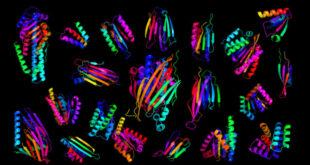A newly-identified natural compound called nitrophenyl psoralen could be used as a treatment to reduce paralysis induced by botulism, a rare illness caused by toxins that attack the nervous system.
Mechanism of action of botulinum toxin: the light chain of (BT-A) cleaves SNAP-25 (synaptosome-associated protein of 25 KDa) and consequently prevents the release of acetylcholine into the neuromuscular junction. Image credit: Ali S. Al-Ghamdi et al, doi: 10.1016/j.jdds.2014.06.002.
Botulinum neurotoxins, the most poisonous proteins known to mankind, are a family of seven (types A-G) immunologically distinct proteins synthesized primarily by different strains of the anaerobic bacteria Clostridium botulinum.
“Although fewer than 200 botulism cases occur worldwide, annually, these cost more to treat than the millions of salmonella outbreaks that occur, making botulism the most expensive form of food poisoning,” said lead author Professor Bal Ram Singh, from the Institute of Advanced Sciences, Dartmouth.
In the study, Professor Singh and colleagues first identified the enzyme within botulinum neurotoxins that damages neurons, causing paralysis.
They then screened a library containing more than 300 small natural compounds from extracts of Indian medicinal plants, searching for enzymes that could neutralize the neuron-damaging activity.
“Using high throughput screening, we identified one of the compounds, nitrophenyl psoralen (NPP), as having particularly strong activity against the neuron-damaging enzyme,” Professor Singh said.
The team then tested NPP’s activity in vitro and in cell culture against botulinum neurotoxin type A, which is the most potent serotype among the seven serotypes of botulinum toxin.
NPP type A had powerful anti-botulinum toxin activity, with low toxicity to human cells.
“NPP also showed activity to reverse the mouse muscle paralysis induced by botulinum neurotoxin type A,” Professor Singh said.
“Psoralen derived drugs are already approved by the FDA in the United States. That would likely hasten the drug approval process for NPP.”
The team’s results were published in the journal Applied and Environmental Microbiology.
_____
Kruti B. Patel et al. Natural Compounds and their Analogues as Potent Antidotes against the Most Poisonous Bacterial Toxin. Applied and Environmental Microbiology, published online November 2, 2018; doi: 10.1128/AEM.01280-18
 #Bizwhiznetwork.com Innovation ΛI |Technology News
#Bizwhiznetwork.com Innovation ΛI |Technology News




